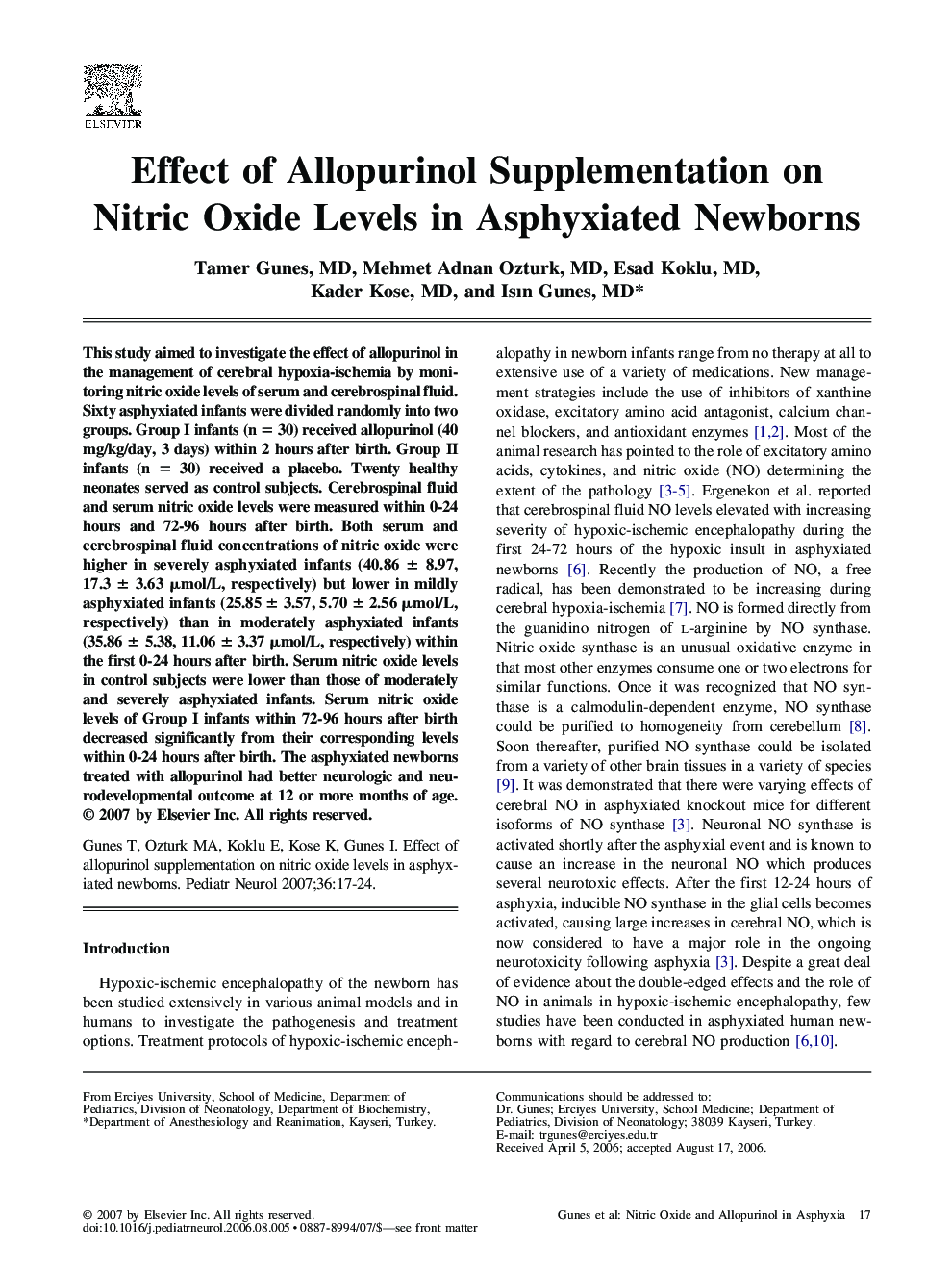| Article ID | Journal | Published Year | Pages | File Type |
|---|---|---|---|---|
| 3086783 | Pediatric Neurology | 2007 | 8 Pages |
This study aimed to investigate the effect of allopurinol in the management of cerebral hypoxia-ischemia by monitoring nitric oxide levels of serum and cerebrospinal fluid. Sixty asphyxiated infants were divided randomly into two groups. Group I infants (n = 30) received allopurinol (40 mg/kg/day, 3 days) within 2 hours after birth. Group II infants (n = 30) received a placebo. Twenty healthy neonates served as control subjects. Cerebrospinal fluid and serum nitric oxide levels were measured within 0-24 hours and 72-96 hours after birth. Both serum and cerebrospinal fluid concentrations of nitric oxide were higher in severely asphyxiated infants (40.86 ± 8.97, 17.3 ± 3.63 μmol/L, respectively) but lower in mildly asphyxiated infants (25.85 ± 3.57, 5.70 ± 2.56 μmol/L, respectively) than in moderately asphyxiated infants (35.86 ± 5.38, 11.06 ± 3.37 μmol/L, respectively) within the first 0-24 hours after birth. Serum nitric oxide levels in control subjects were lower than those of moderately and severely asphyxiated infants. Serum nitric oxide levels of Group I infants within 72-96 hours after birth decreased significantly from their corresponding levels within 0-24 hours after birth. The asphyxiated newborns treated with allopurinol had better neurologic and neurodevelopmental outcome at 12 or more months of age.
